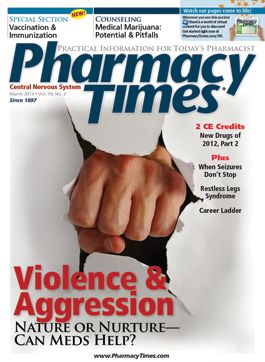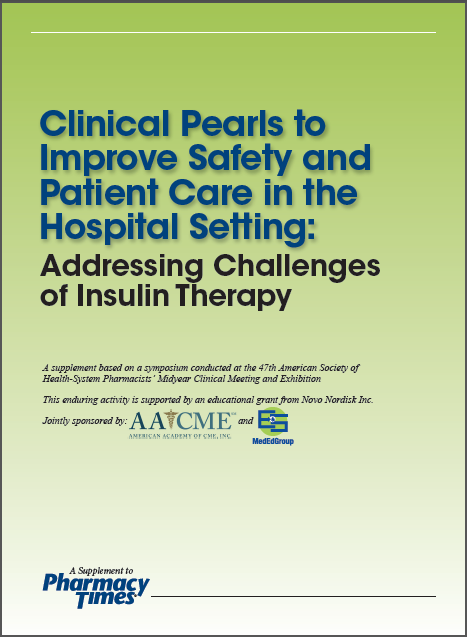Publication
Article
Pharmacy Times
Clinical Pearls to Improve Safety and Patient Care in the Hospital Setting: Addressing Challenges of Insulin Therapy
A supplement based on a symposium conducted at the 47th American Society of Health-System Pharmacists' Midyear Clinical Meeting and Exhibition.
A supplement based on a symposium conducted at the 47th American Society of Health-System Pharmacists’ Midyear Clinical Meeting and Exhibition
This enduring activity is supported by an educational grant from Novo Nordisk Inc.
Jointly sponsored by: American Academy of CME and E&S MedEd Group
Release date: March 15, 2013
Expiration date: March 15, 2014
Activity Overview
This supplement focuses on the importance of addressing hyperglycemia in the inpatient setting, whether in patients with known diabetes or those without diabetes. In reviewing the most recent recommendations from major medical societies on the management of inpatient hyperglycemia, the important topic of avoiding the risks of hypoglycemia and the safe use of insulin is discussed. Central to ensuring the safe and effective balancing act of achieving normoglycemia is the need for involvement of multiple stakeholders and a multidisciplinary team, of which the pharmacist is a key player.
Learning Objectives
After completing this educational activity, the learner should be better able to:
- State recent recommendations for glycemic targets for the inpatient setting and the value of glycemic control on out­comes during hospitalization
- Explain to other members of the diabetes management team why sliding scale insulin should not be the treatment of choice for insulin administration in the hospital setting
- Select appropriate types of insulin agents to meet patients’ physiologic insulin needs
- Formulate a plan to improve the safe and effective use of insulin in their hospital setting
Target Audience
Healthcare system pharmacists. Other healthcare professionals may also participate.
Accreditation Statement

American Academy of CME, Inc, is accredited by the Accreditation Council for Pharmacy Education (ACPE) as a provider of continuing pharmacy education.
This educational activity provides 1.25 contact hours (0.125 CEUs) of continuing education credit. ACPE Universal Activity Number: 0297-9999-13-001-H01-P, knowledge-based activity.
Instructions for Claiming Credit
After reviewing the CPE information and activity content, please fax back the paper-based activity posttest and evaluation form at the end of this supplement. You may also complete the posttest (score 70% or greater) and evaluation online.
Your statement of credit will be issued through CPE Monitor (you must provide your National Association of Boards of Pharmacy [NABP] e-Profile ID and month and day of birth) within 6 to 8 weeks following your participation in the activity.
Time to complete this free activity: 1.25 hours.
Disclaimer
This CPE-certified activity is designed for use by health care professionals for educational purposes only. The opinions expressed in this educational activity are those of the faculty, and do not represent those of the Academy or E&S MedEd Group. This activity is intended as a supplement to existing knowledge, published information, and practice guidelines. Learners should appraise the information presented critically, and draw conclusions only after careful consideration of all available scientific information.
According to the disclosure policy of the American Academy of CME (Academy), all faculty, planning committee members, editors, managers, and other individuals who are in a position to control content are required to disclose any relevant relationships with any commercial interests related to this activity. The existence of these interests or relationships is not viewed as implying bias or decreasing the value of the activity. All educational materials are reviewed for fair balance, scientific objectivity, and levels of evidence.
Click here or the image below for complete activity information to participate.








